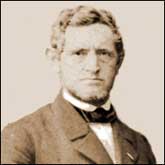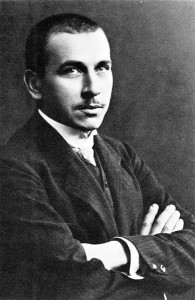Frederik Klee
Bennett, Kyle
Kyle Bennett is a British journalist and the author of Polar Wandering and the Cycle of Ages, which reviews the Earth Crustal Displacement (ECD) theory of Charles Hapgood. Prior to the book, he had written a number of articles about the history of ECD theory before Hapgood. One concerned Frederik Klee(a) and another was about Sir John Evans(b) the British archaeologist. He also reviews the history of ECD on Graham Hancock’s website(d). His maintains his own supporting website(e).
In case readers may feel that the subject of ECD is unrelated to Atlantis, they should keep in mind that the theory of Atlantis in the Antarctica(c), promoted by Rand Flem-Ath, is totally dependent on ECD and its occurrence within the memory of man.
(a) https://blog.world-mysteries.com/science/frederik-klee-the-unsung-hero-of-earth-crust-displacement/
(b) https://blog.world-mysteries.com/science/earth-crust-displacement-and-the-british-establishment/
(c) See: https://web.archive.org/web/20180524185741/https://www.flem-ath.com/
Boucheporn, Baron René de (L)
Baron René de Boucheporn (1811-1857) suggested in 1844 that the axis of the earth had been altered by an encounter with a comet. A few years later Frédérik Klee discussed this pole shift theory at length[794] but for his own part he favoured an internal force as the cause of any axial change.
Klee, Frederik
Frederik Klee (1808-1864) was a Danish scholar and was a parliamentarian from 1858  until his death. He published his Le Déluge in Copenhagen in 1842 and in Paris[794] in 1847, a work which included many original ideas. He was one of the first to suggest the possibility of an earth axial shift, although in the French edition of his book he discusses the 1844 theory of Baron René de Boucheporn, who also supported the idea of a pole shift. But, Boucheporn followed Carli, attributing it to an encounter with a comet in contrast to Klee’s contention that the cause was internal.
until his death. He published his Le Déluge in Copenhagen in 1842 and in Paris[794] in 1847, a work which included many original ideas. He was one of the first to suggest the possibility of an earth axial shift, although in the French edition of his book he discusses the 1844 theory of Baron René de Boucheporn, who also supported the idea of a pole shift. But, Boucheporn followed Carli, attributing it to an encounter with a comet in contrast to Klee’s contention that the cause was internal.
Allan & Delair[014.14] quote Klee as contending ”that certain ancient hieroglyphics refer to a displacement of the heavens at the time of the Deluge.”
Some of Klee’s ideas were ahead of his time and were forgotten until the following century when they were echoed in the work of Wegener and Hapgood.
Full English language biographies of Klee plus excerpts from his book are now available(a)(b).
(a) See: Archive 5144)
(b) https://blog.world-mysteries.com/science/frederik-klee-the-unsung-hero-of-earth-crust-displacement/
Wegener, Alfred
Alfred Wegener (1880-1930) was a German professor of meteorology who in 1912 advanced the theory of Continental Drift, which proposed that the continents were in motion, however slowly. In this context, he contended that Atlantis was a distant  memory of the time when America, Europe and Africa were joined. However, the rate of ‘drift’ is so slow that such a conjunction of the continents would have broken up long before the emergence of modern man. Unfortunately, Wegener died while exploring the Greenland ice cap.
memory of the time when America, Europe and Africa were joined. However, the rate of ‘drift’ is so slow that such a conjunction of the continents would have broken up long before the emergence of modern man. Unfortunately, Wegener died while exploring the Greenland ice cap.
As early as 1842 Frederik Klee had suggested that originally there had existed one large megacontinent which later broke up(a), an idea later echoed by Wegener.
>The discovery of the Mid-Atlantic Ridge in the 19th century had allowed geologists and botanists to suggest that it may have provided a stepping-stone or landbridge across the Atlantic explaining the shared biota on both sides of the ocean. Some also thought that the Mid-Atlantic Ridge provided a possible home for Atlantis. However, Wegener’s proposed theory of continental drift did not allow room in the Atlantic for a continent-sized Atlantis leaving some geologists who were Atlantis supporters somewhat unhappy.<
Wegener’s theory was slowly accepted and eventually morphed into the theory of ‘plate tectonics’ in the 1960’s. But, even today, the latest tectonic concepts appear to have been brought into question by a study of the lava fields of Saudi Arabia. The theory is also under attack by supporters of the Expanded Earth hypothesis(b). On the other hand, an Islamic website has identified a reference in the Qur’an to the concept of an expanding Earth(c).
(a) See Archive 5144
(b) https://www.wincom.net/earthexp/n/navback.htm (offline Aug. 2017)
(c) See Archive 3384
